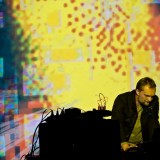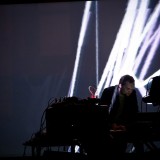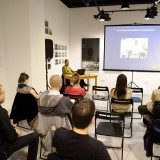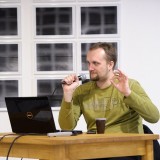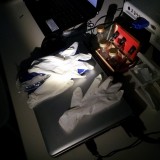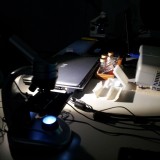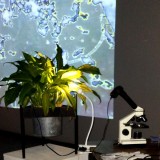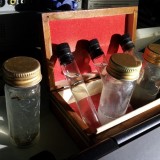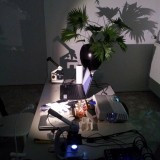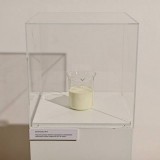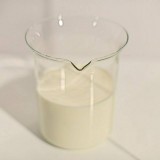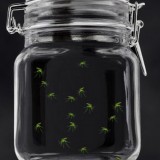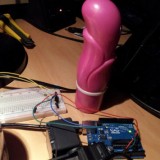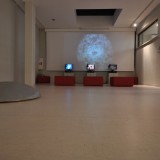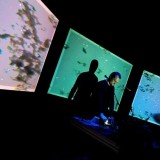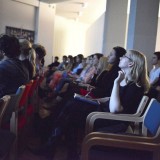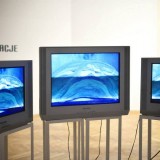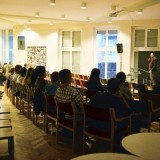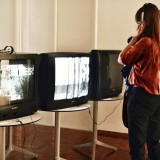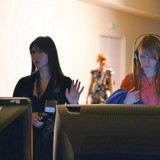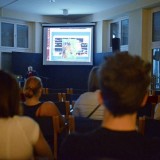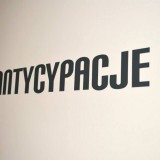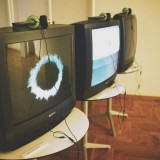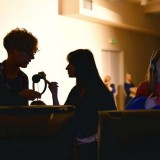Michał Brzeziński
Born in 1975, a graduate of film studies in 2003 from the Faculty of Media and Audiovisual Culture within the University of Łódź. A theoretician, artist and curator of the Para-cinema (2008-2010) and the international In Out Festival (2009-2011) in the CCA Łaźnia and the New Technologies Gallery (2010) at the House of Culture in Łódź, which was a unique event in Poland. He is one of the most important Polish artists and theoreticians of video art and most recently, since 2012 a forerunner and so far the only active representative of bio art on the Polish scene. He is also interested in affective art and the category of “affective interaction” as a new aesthetic phenomenon taken rather from neuro-cybernetics and medicine than from reflections upon philosophy known up till now. The starting point for his artistic activity is his historical awareness, and especially the experiences of structural film.br />
Among his few dozen movies is the work entitled Pain (2001) is very important as within this work he defined the area of his interest in film language using various aesthetic spaces and narrative measures which are typical for film. Therefore the choice of film material used in it is essential and based on important examples of Polish cinematic achievements which belong to “the Polish school”. The aim of this very successful project, undoubtedly one of the most interesting in Polish “found footage” is the showing of the cultural and culture-making function of pain. His early theoretical program was completed in his subsequent important work Warsaw (2003), which showed social-realistic architecture, politicians, ordinary inhabitants and the poor in a historical context. In AV 60 the tradition of visualism and geometric abstraction from the 50s of the 20th century caused him to use the aesthetics of avant-garde film. He touched the issues of ideology and political life for the last time in such an open way in his video work Crash 44 (2006) in which scenes from the Polish parliament were shown, including the figures of Donald Tusk and Andrzej Lepper in mysterious, not to say prophetic scenery.
An analysis of the culture of the image using video is a motif that shows up in subsequent works which aim at being interactive and search for the content of the Internet thanks to Google search engine such as Passion. Its meaning is particularly important in the context of present artist’s work which connects various worlds and images. But it was an entrance towards the subsequent phase of the theoretic and artistic development of “Fake Art”. A video in such function was used by him to visualise the way a computer software works in the movie Memory from 2002. The term “Fake Art” showed up in the context of films such as Golden Rain (2011) and Video Virus. There the artist explored the psychological attitude of the viewer watching the “golden rain” which attack him/her with a hail of “healing” rays or a geometric form of a flu virus DNA. This way the artist researched the energetic artificiality of the form, its simulative character and potential influence on the recipient. In the opinion of the artist, the whole sphere of the digital reality of images is burdened with the notion of D-effect. It was a play with the viewer who was informed about the meaning of the object in a form as if its description referred to its matter, so we deal with pretending, in which we see the change of attitude towards the humanistic and socially engaged first phase of his artistic activity. Since the very beginning it is worth noting the eclectic or postmodern character of his art.1
In the last stage of his work practice which has lasted till today, with his strongly intellectualised artistic activity he has created something unique in a Polish form of trans-humanistic bio art (since 2011) in which the subjectivity of the man inscribed in culture has disappeared. An example of a new aesthetics is the work Betula Alba (2011) which used a file in BMP format (artist’s self portrait) with the DNA code of a birch tree. The artist consciously resigns from what’s “human” and connects in his works the elements of fauna and flora. In his important theoretic text entitled Affective media he wrote: “[…] Today this ideological tension […] there are tracks of thought which mutually determine each other lives through the moments of final shocks. This is because it has turned out that not the matter but the energy itself fills the role of the antique arche, although these theories are also impossible to prove. Mathematics leads physicians to almost mythical conclusions.” 22
His theoretical and artistic ideas are sometimes completed in a form of workshops, as in the case of the project Biodiversity (2013), sometimes in the form of concrete interactive installations in works such as Dendrophilia (2012), Bios and Zoe (2011), Nanodisco (2011) and sometimes in the form of a performance: Affective Cinema (2013), Nanodisco (2012), Plant action (2011). Part of the works emerge as an idea and then are presented in a “Fake” form, which when completed exists as an installation. Some projects like e.g. Virus Video were completed in the form of a video (2010) which visualised the DNA code and then in co-operation with other artists (Paweł Janicki) were turned into an interactive installation (2012). Also there is a series of graphics Virus Video (2011) tightly associated with the video work.
His art which is unique in Poland brings back the Renaissance myth about the artist-scholar who ahead of art, philosophy and theoretical and aesthetic aspects lays out new, unknown roads. Biological life is analysed as part of art which uses the newest achievements in science and its aim is simulated creating new bio-informative forms from the border of living human, fauna and flora, which await their new codification. The artist himself sees the beginnings of his current stance in the beginning of his artistic road in the 90s and connects himself with a post-Nietzsche vision.
1. K. Jurecki, Michał Brzeziński. Będzie to holistyczne techno-wideo, jako jedyna forma medytacji, [It will be a holistic techno-video, as the only form of meditation] Idem, Poszukiwanie sensu fotografii. Rozmowy o sztuce,[The search of the sense of Photography. Talks about art], Łódź 2008.
2. M. Brzeziński, Afektywne media, [Afftective media] http://www.michalbrzezinski.org/bioart/michal-brzezinski/artist/critical-writings/discussions-and-criticism/affective-media.
Krzysztof Jurecki
more at the artist's web site:
http://www.michalbrzezinski.org/


